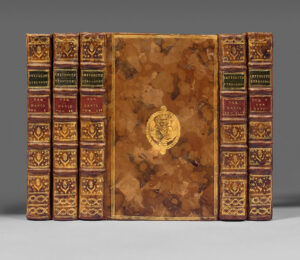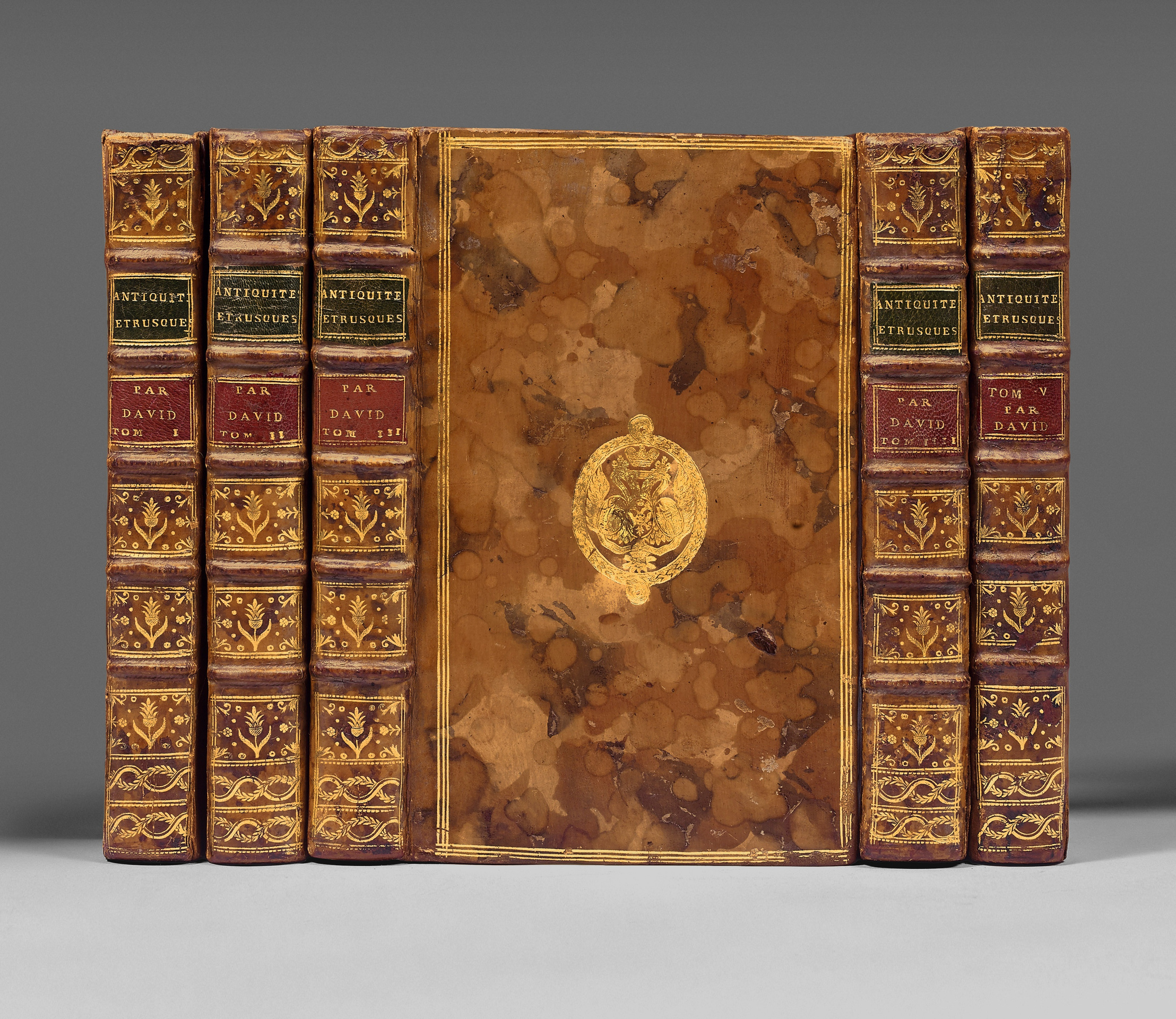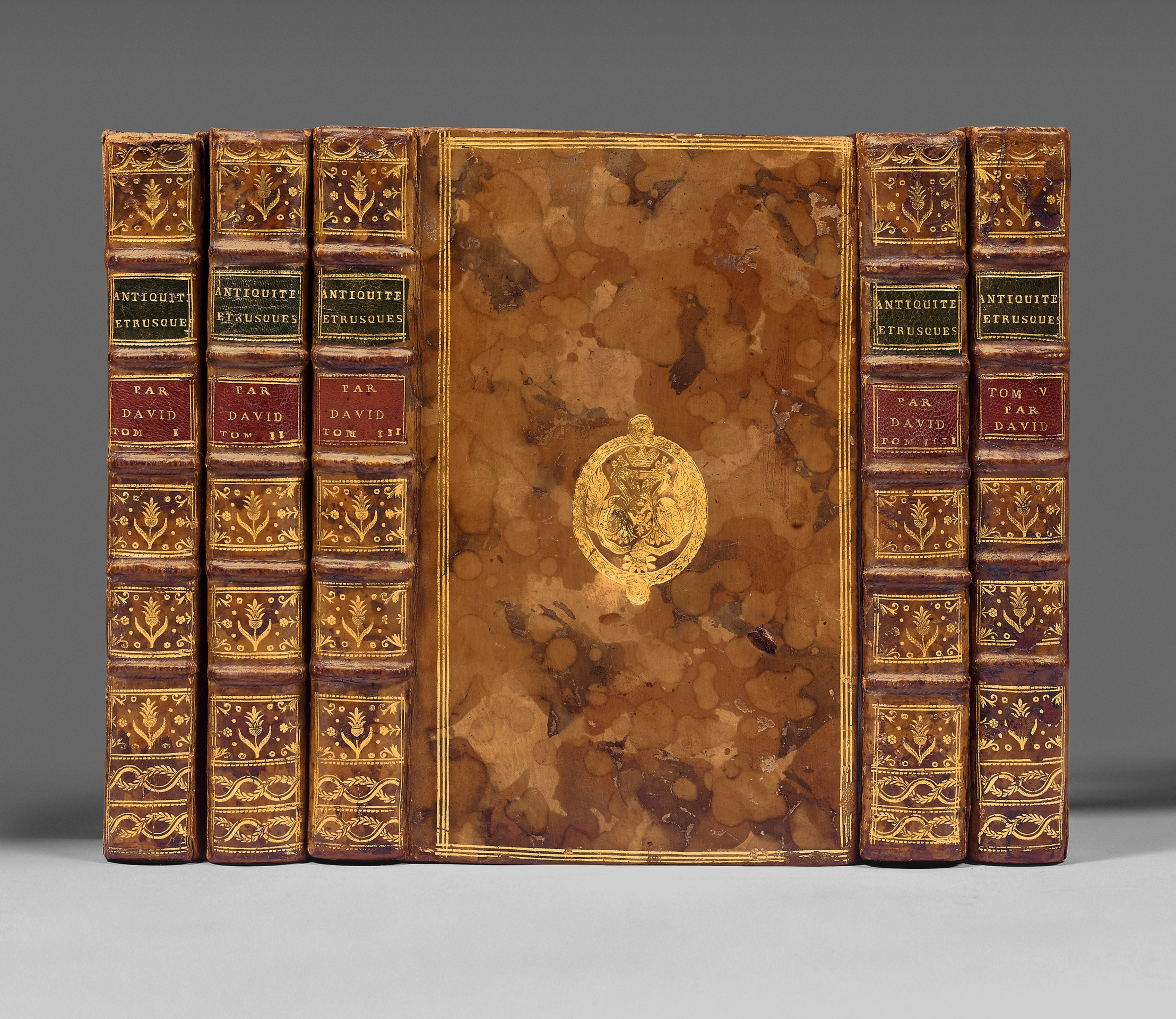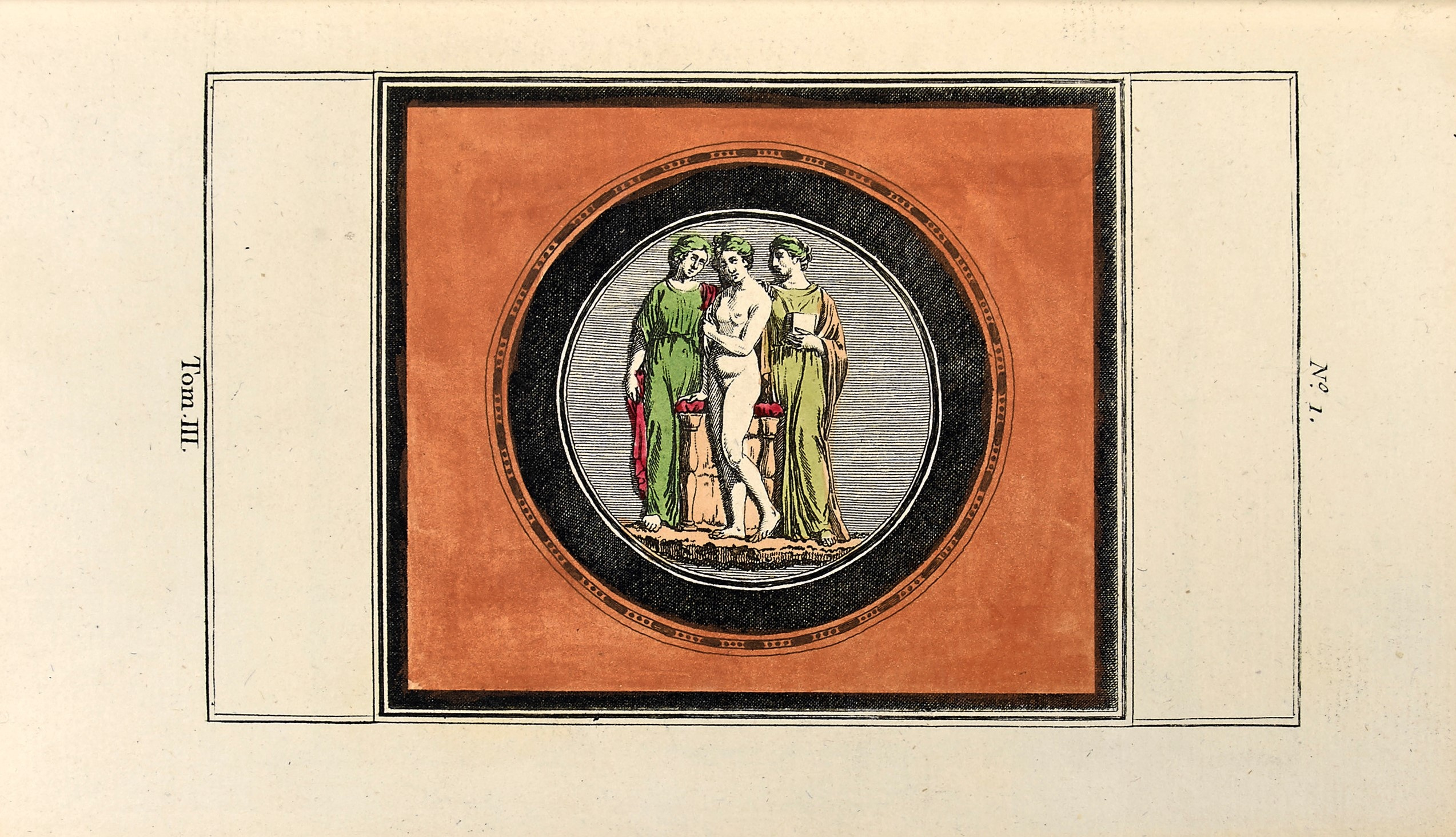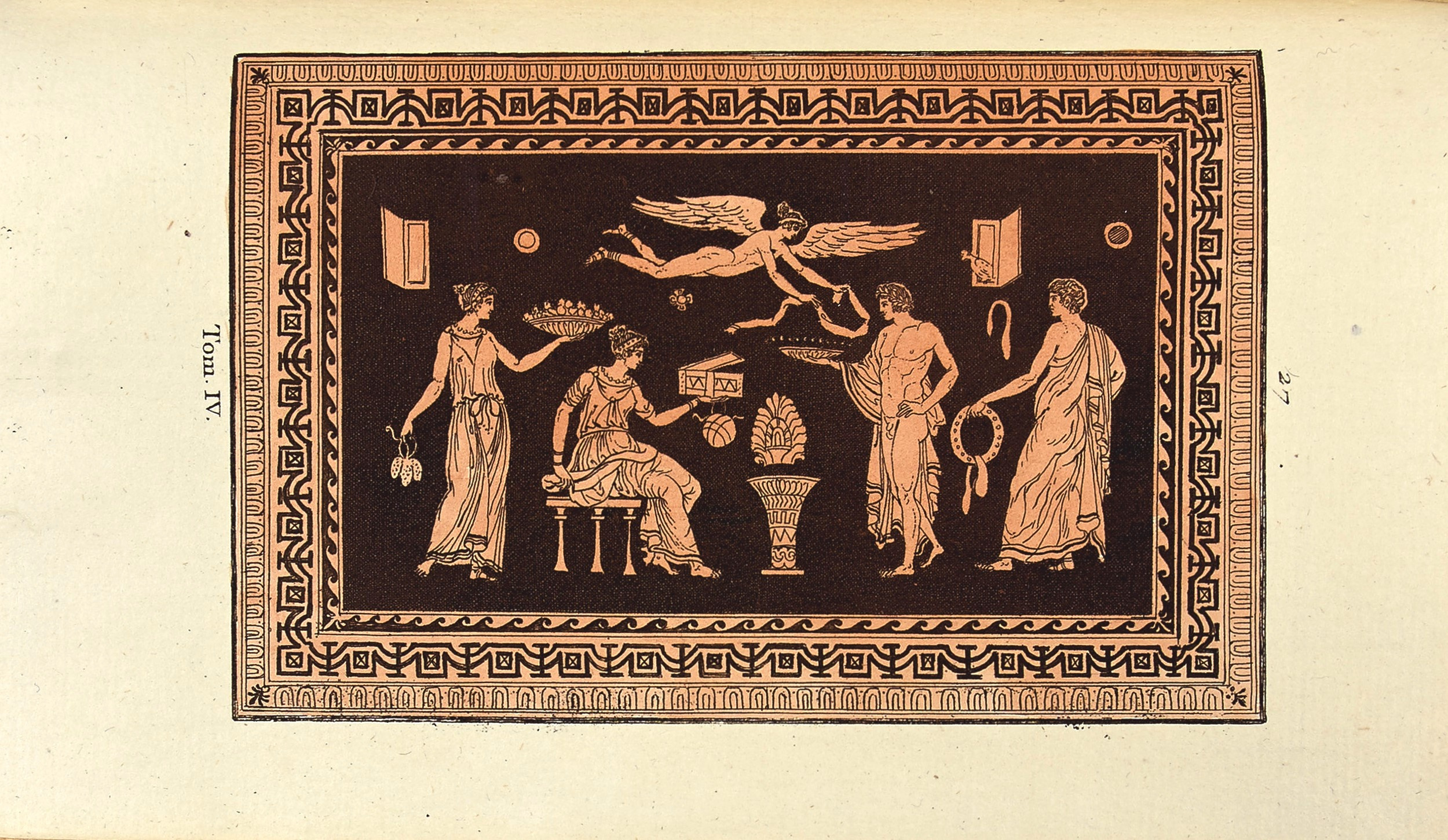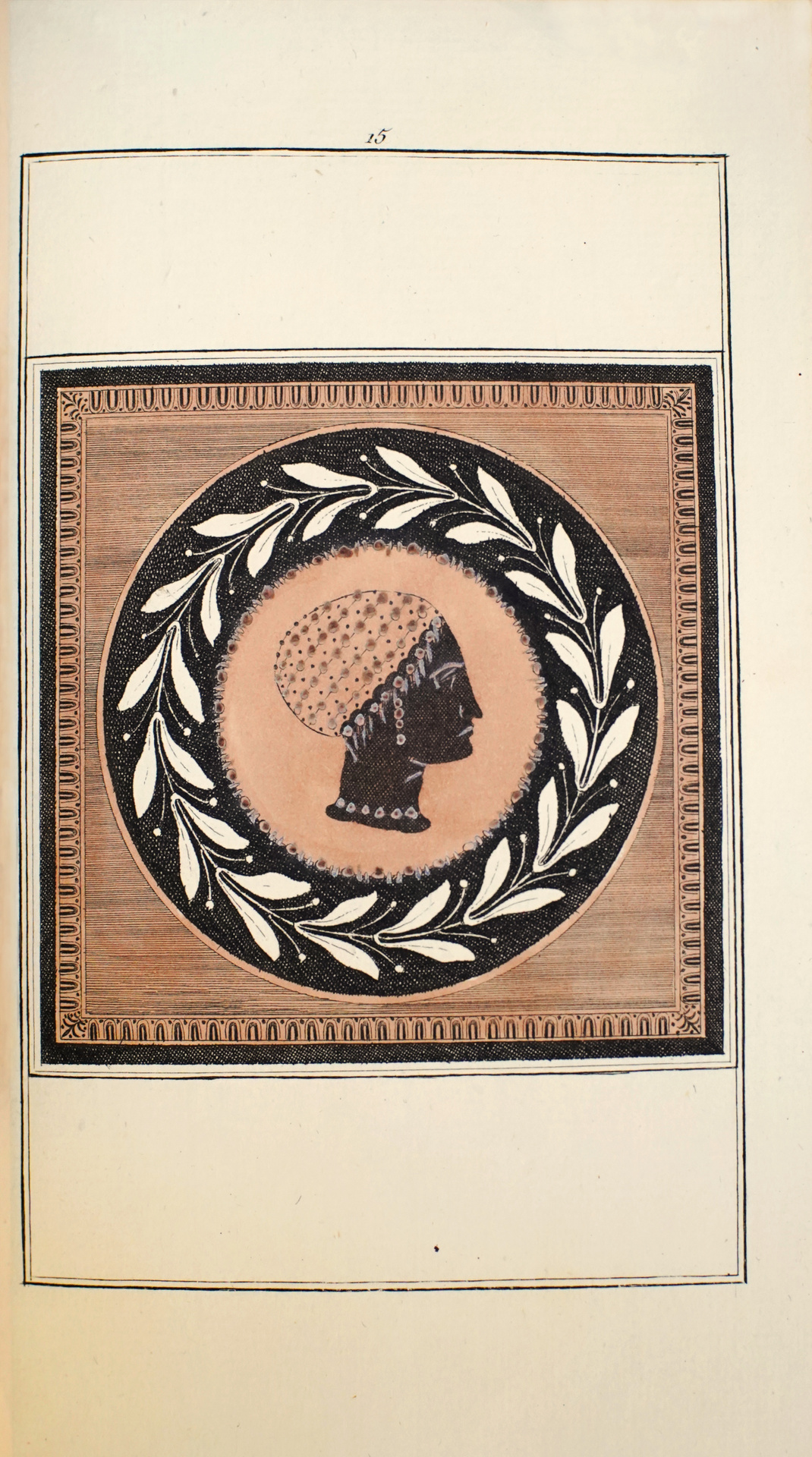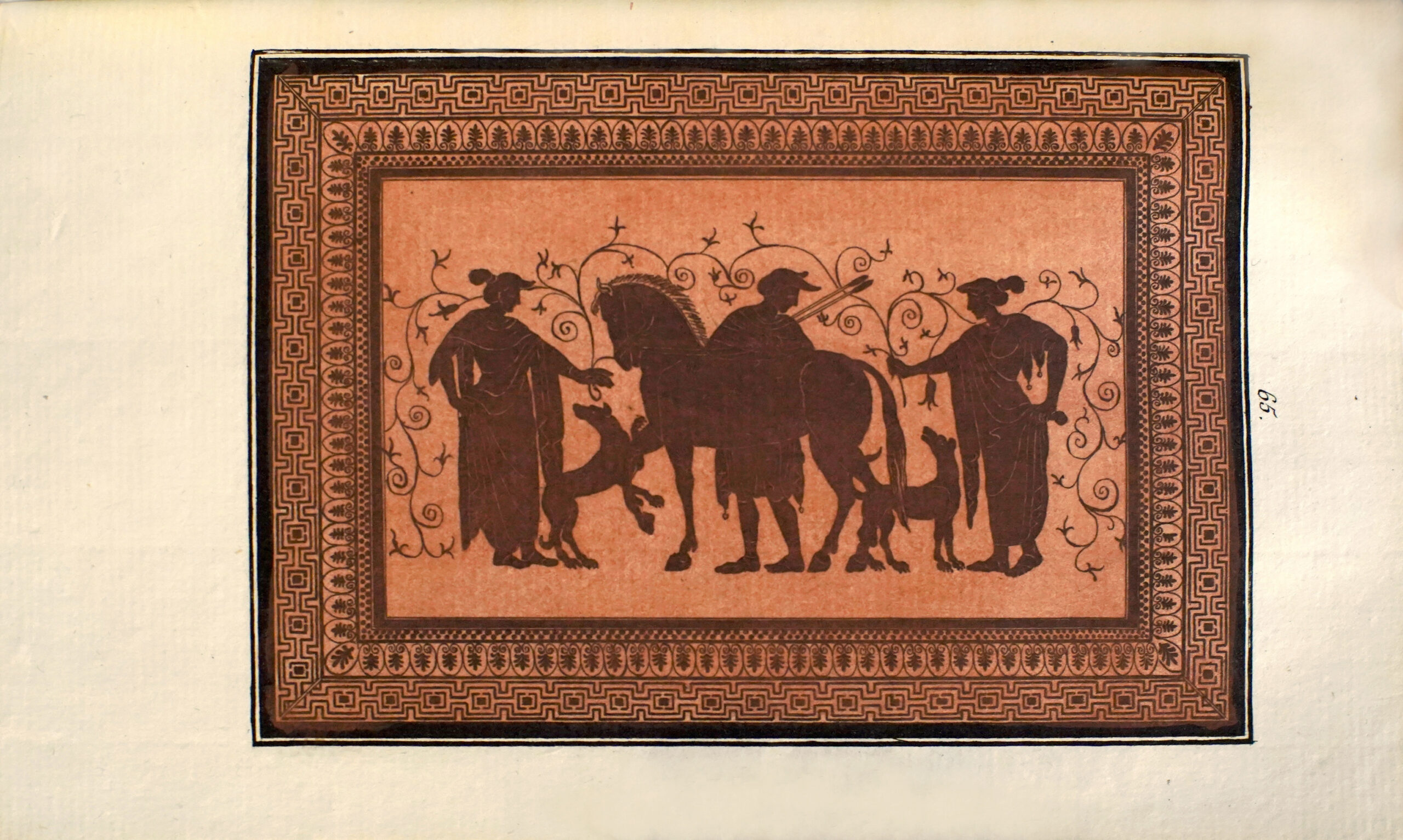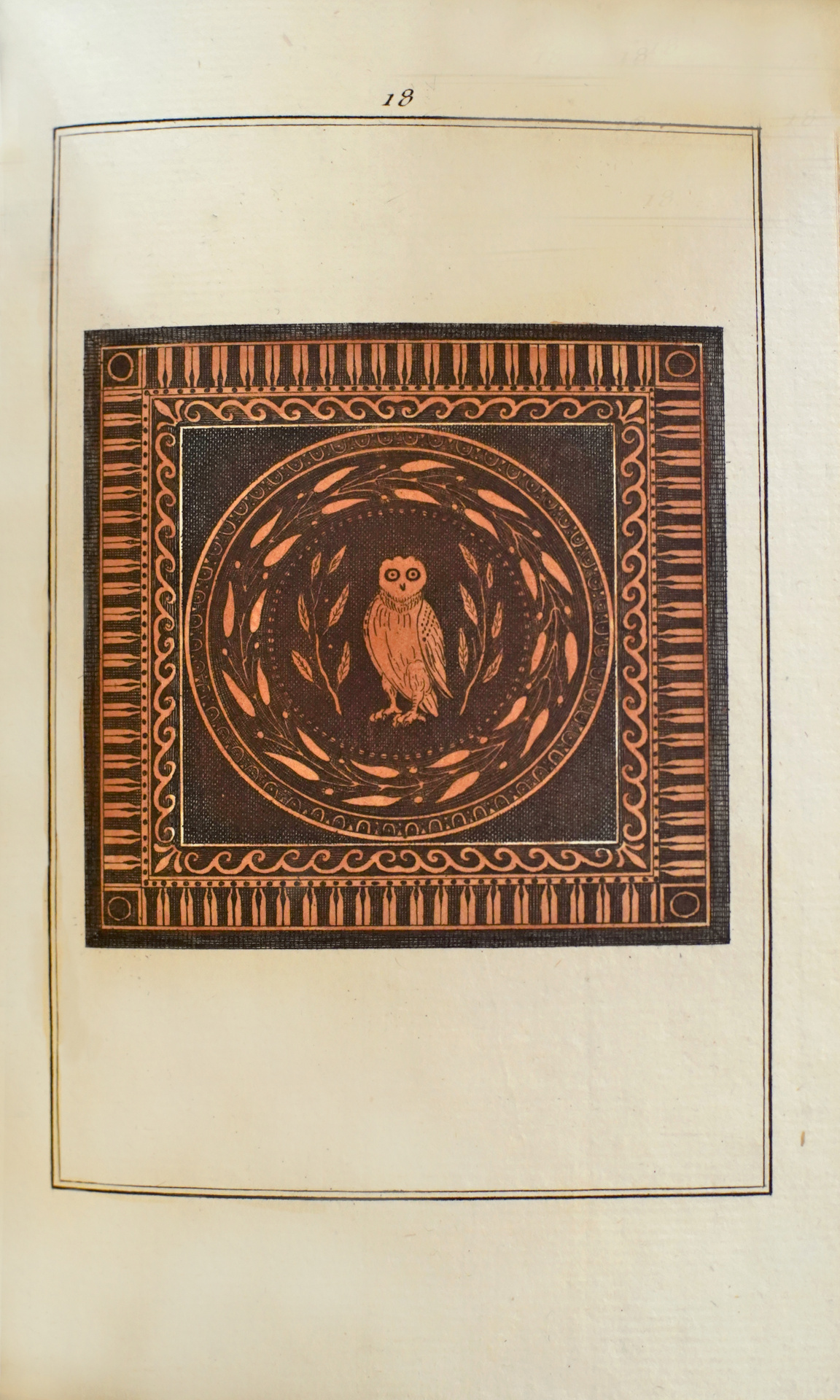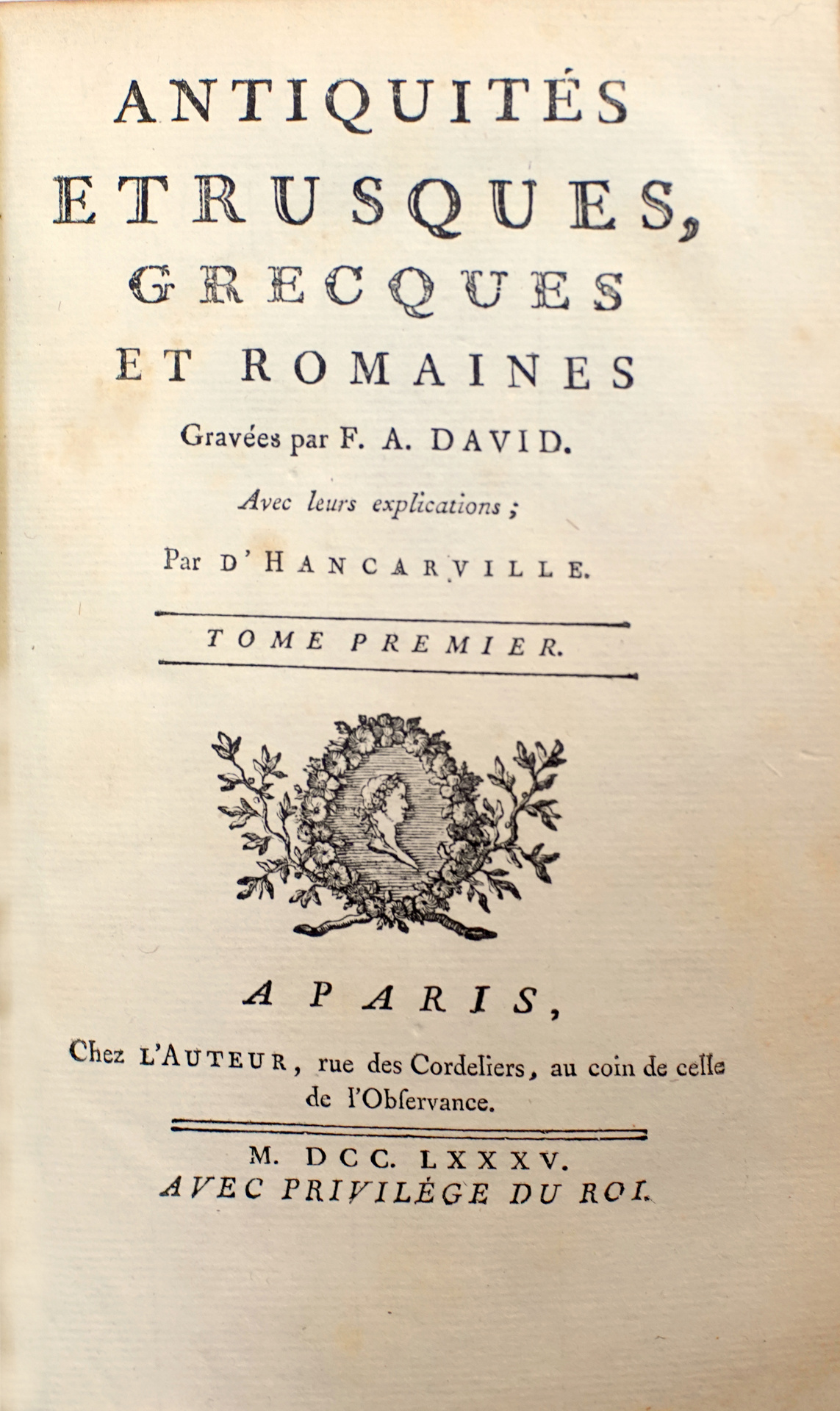Paris chez l’auteur, (de l’imprimerie de Caillêu), 1785 [- 1788].
5 volumes 8vo [200 x 125 mm]: [2]-103-[1], 134, 142, 180-[4], 110-[2] pp. ; 365 plates out of pagination, most of them protected with silky-papers. Complete.
Full marbled calf, triple gilt fillet around the coat of arms on the covers, ribbed spine decorated with fleurons and enhanced with gold, red and green lêther labels, gilt fillet and borders, gilt edges (T. 5 without arms). Contemporary binding with arms.
First 8vo edition and second edition (after the original from Naples, 1766) illustrated with 366 plates out of pagination: 5 titles-frontispieces and 361 numbered subjects on 60 plates, almost all enhanced with sepia watercolors representing vases, sculptures, paintings, statues…, reproduces from the collections of William Hamilton, British Ambassador to Italy. The subjects 28-29 of the first volume are printed on the same lêf, plate 1 of the volume 3 is enhanced with 4 colors, the tables indicate a total of 357 subjects from which we have to add 4, not mentioned). The arms of the dedicatee, Count of Néale, were also enhanced with colors.
Those two first editions magnified the Greek and Roman antiquities, and exercised the grêtest influence in the development of the neo-classic movement in France and England. Cohen de Ricci 474, Blackmer 345, Berlin Katalog 890.
Ambassador of England in Naples from 1764, Sir William Hamilton took an active part in the resêrch carried out in the ruins of Herculaneum and Pompeii.
He was keen to bring together artistic riches from Antiquity and acquired an extraordinary collection of antique vases from the Porcinari house, which he then offered to the British Museum. Most of his works of art were lost in 1800 in a shipwreck on his return to England. During his stay in Naples, Sir Hamilton asked Pierre-François-Hugues known as Hancarville, which he appreciated the erudition and the artistic talent, to make a magnificent publication to allow the scholar and art lover public to admire the bêuty of the collections combined.
Prestigious provenance: Tsar Paul I of Russia (born in 1754, tsar in 1796, assassinated in 1801), son of Catherine the Grêt (supra libros, except volume 5 which has no arms: central coat of arms of the Romanow, on the left the coat of arms of his second wife Sophie Feodorowna von Wurtemberg, 1759 1828, on the right the coat of arms of his father Count Karl Friedrich von Holstein-Gottorp, 1700 1739).
